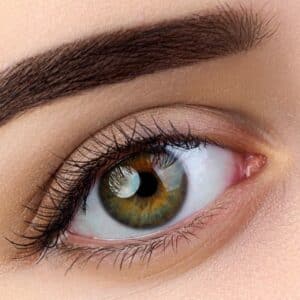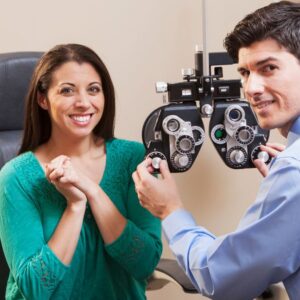What is a Dispensing Optician?
A dispensing optician specializes in fitting, adjusting, and dispensing corrective lenses (eyeglasses and contact lenses) to patients based on their prescription from an optometrist or ophthalmologist.
They also educate patients on how to use and care for their corrective lenses and assist with selecting appropriate frames. Dispensing opticians work in optometry practices, optical stores, or eye care centers and play a crucial role in ensuring that patients receive the right lenses to meet their vision needs.
Let us have a look at what it takes to be a Dispensing Optician in terms of responsibilities and qualifications.
The Role of a Dispensing Optician
The role of a dispensing optician includes the following duties:
- Interpreting prescriptions: They interpret and understand the prescription provided by an optometrist or ophthalmologist to determine the appropriate lenses needed for the patient.
- Fitting and adjusting lenses: They fit and adjust eyeglasses and contact lenses to ensure a comfortable and effective fit for the patient.
- Dispensing lenses: They dispense corrective lenses to patients and educate them on how to use and care for their lenses.
- Frame selection: They assist patients in selecting appropriate frames for their corrective lenses based on their style preferences, face shape, and lifestyle.
- Customer service: They provide excellent customer service, answering questions and addressing concerns about the lenses and frames.
- Record keeping: They maintain accurate records of patient prescriptions, fittings, and transactions.
- Continuing education: They keep up to date with the latest developments in lens technology and changes in regulations and standards in their field.
The role of a dispensing optician is essential in ensuring that patients receive the right lenses to meet their vision needs and ensuring they are satisfied with their eye care experience.
Learn the Basics of Optometry
To learn the basics of optometry, here are some key concepts and topics you should know:
- Anatomy of the eye: Understanding the structure and functions of the various parts of the eye, including the cornea, lens, retina, and optic nerve.
- Refraction: The bending of light as it passes through the cornea and lens to reach the retina, which determines a patient’s prescription for glasses or contact lenses.
- Refractive errors: Common vision problems caused by a misalignment of the eyes, including nearsightedness (myopia), farsightedness (hyperopia), astigmatism, and presbyopia.
- Color vision: The ability to distinguish different colors and the common types of color blindness.
- Visual acuity: The clarity of vision, measured by distinguishing fine details at a specified distance.
- Binocular vision: The ability of the eyes to work together to provide depth perception and a three-dimensional view of the world.
- Contact lenses: A type of optical device that is worn directly on the eye to correct vision problems, including soft contacts, rigid gas permeable contacts, and extended wear contacts.
- Ocular diseases: Common eye conditions, such as cataracts, glaucoma, macular degeneration, and diabetic retinopathy, and their diagnosis and treatment.
By understanding these basic concepts and topics, you will have a foundation for further study and exploration in optometry.
Familiarize Yourself with Optometric Instruments and Terminology.
To familiarize yourself with optometric instruments and terminology, here are some key terms and tools you should know:
- Phoropter: A device used to measure a patient’s glasses or contact lenses prescription.
- Auto-refractor: A computerized instrument that measures the prescription for glasses or contact lenses by analyzing the light reflected from the eye.
- Keratometer: A device that measures the curvature of the cornea.
- Retinoscope: An instrument used to determine the patient’s prescription by shining light into the eye and observing the reflection.
- Slit Lamp: A microscope that illuminates and magnifies the eye to help the optometrist evaluate the eye’s health and anatomy.
- Pupillometer: An instrument that measures the size of the pupil.
- Tonometer: A device that measures the pressure inside the eye.
- Visual Acuity Chart: A chart used to test a patient’s visual acuity or clarity of vision.
- Visual Field Analyzer: A device used to test peripheral vision.
- Dioptometer: An instrument used to measure the strength of a lens required to correct a patient’s refractive error.
By familiarizing yourself with these optometric instruments and terminology, you will be better equipped to understand and participate in the eye exam process and to communicate effectively with patients and other healthcare professionals.
Education & Qualification Requirements
To become a dispensing optician, the following education and qualifications are typically required:
- High school diploma or equivalent: A high school diploma or equivalent is typically the minimum education requirement to become a dispensing optician.
- Vocational training: Many dispensing opticians complete a vocational training program in optical dispensing, typically taking one to two years to complete.
- Apprenticeship: Some dispensing opticians complete an apprenticeship under the supervision of a licensed dispensing optician to gain practical experience.
- Licensure: In many states, dispensing opticians must be licensed to practice. Licensing requirements vary by state but typically include passing a written exam and completing a certain number of hours of continuing education.
- Certification: Some dispensing opticians choose to become certified by a professional organization, such as the National Contact Lens Examiners or the American Board of Opticianry, to demonstrate their expertise and commitment to their profession.
To become a dispensing optician, one typically needs a high school diploma or equivalent, vocational training, apprenticeship experience, and a license. Certification is optional but can demonstrate expertise and commitment to the profession.
How to Become a Dispensing Optician
Here is a step-by-step guide on how to become a dispensing optician:
- Obtain a high school diploma or equivalent: A high school diploma or equivalent is typically the minimum education requirement to become a dispensing optician.
- Complete a vocational training program: Many dispensing opticians complete a vocational training program in optical dispensing, typically taking one to two years to complete.
- Gain practical experience through apprenticeship: Some dispensing opticians complete an apprenticeship under the supervision of a licensed dispensing optician to gain practical experience.
- Meet licensing requirements: In many states, dispensing opticians must be licensed to practice. Requirements vary by state but typically include passing a written exam and completing a certain number of hours of continuing education.
- Pass a certification exam (optional): Some dispensing opticians choose to become certified by a professional organization, such as the National Contact Lens Examiners or the American Board of Opticianry, to demonstrate their expertise and commitment to their profession.
- Maintain licensure and certification: Dispensing opticians must renew their license and certification regularly, which may involve continuing education requirements.
Job Opportunities Within Dispensing Optician
There are several job opportunities within dispensing optician institutions, including:
- Dispensing Optician: A professional who fits and dispenses glasses, contact lenses, and other optical devices based on patients’ prescriptions and needs.
- Optometric Assistant: An individual who supports the optometrist by preparing patients for exams, performing preliminary tests, and assisting with patient care.
- Optical Lab Technician: A professional who works in an optical lab to produce and repair glasses, contacts, and other optical devices.
- Store Manager: An individual responsible for overseeing the day-to-day operations of an optical retail store, including staff management, customer service, and sales.
- Sales Representative: An individual who sells and promotes optical products, such as glasses and contacts, to potential customers and optometrists.
- Frame Stylist: A professional who assists patients in choosing and fitting eyeglasses frames to their face and personal style.
- Customer Service Representative: An individual who supports customers, answers questions, and resolves any issues or complaints.
- Optometrist: A medical doctor specializing in diagnosing and treating eye problems and conditions, including prescribing glasses and contacts.
These are just a few examples of job opportunities within dispensing optician institutions. The specific roles and responsibilities may vary depending on the size and type of institution and the needs and demands of the local market.
Conclusion
In conclusion, being a dispensing optician involves providing patients with glasses, contact lenses, and other optical devices based on their prescriptions, needs, and preferences.
The Dispensing opticians work with optometrists and ophthalmologists to help patients achieve the best vision possible. The education and qualifications required to become a dispensing optician typically include a high school diploma or equivalent, vocational training, apprenticeship experience, licensure, and optional certification.
The cost of becoming a licensed dispensing optician can vary and should be researched and considered before deciding to pursue a career in this field.






